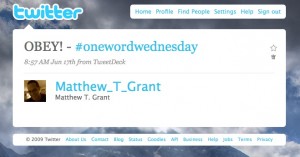Jan 4, 2013 Comments Off on Academic Time
Academic Time
If you have never attended the MLA or any other conference in the humanities, then you may not be aware that the traditional mode of presentations at these affairs is “slow reading.” That is, people sit at a skirted table and slowly read their papers to the audience.
Towards the end of my own academic career, I became frustrated with this mannered and boring format and vowed never again to read a paper at a conference (a vow I have kept, opting to “present,” rather than read).
With the MLA Convention in town, a friend on Facebook was lamenting the persistence of this practice and wrote, “I only wonder sometimes if the slow-motion paper reading isn’t analogous to the glacial change we’re enacting for the students.”
What connects this stilted method of recitation and the glacial pace of institutional change, particularly in the humanities, is a shared temporal horizon. Academic time is cyclical, seasonal and mythic. It’s a pastoral time, following the rhythm of the harvest, on the one hand, but also a timeless, monastic time in which scholars toil insulated from the hectic pace of the secular world.
Scholarly work relying on immersion in texts, contemplative reflection and artful writing seems to require solitude and a remove from the world. The academic institution, however, needs to engage with the world in order to maintain itself and thus enable and support such remove.
The challenge faced by the humanities lies in reconciling this circular time, this time beyond time, with the restless, linear time of the outside world—for that time, is the time of change.
 I’ve been a “
I’ve been a “